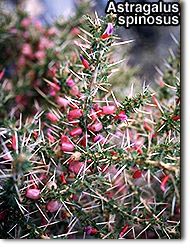 Considering its size the UAE has a wide variety of natural habitats and for our chapter on plants in this general wildlife book we shall take a look at communities within these habitats, rather than present a taxonomic treatise or flora , a task better left to the professionals. As we undertake this floristic escapade, briefly exploring their plants within different communities, I shall guide you, not as a trained botanist, but rather as an enthusiastic plant collector and observer. In nearly thirteen years of enjoying the deserts of the UAE, I have been amazed at the diversity of its plant life and the wonderful adaptations that have evolved to cope with the harsh living conditions. Considering its size the UAE has a wide variety of natural habitats and for our chapter on plants in this general wildlife book we shall take a look at communities within these habitats, rather than present a taxonomic treatise or flora , a task better left to the professionals. As we undertake this floristic escapade, briefly exploring their plants within different communities, I shall guide you, not as a trained botanist, but rather as an enthusiastic plant collector and observer. In nearly thirteen years of enjoying the deserts of the UAE, I have been amazed at the diversity of its plant life and the wonderful adaptations that have evolved to cope with the harsh living conditions.
On a four-hour drive along the western coast going from south to north, you will see the saline sabkha flats of Abu Dhabi turn into sandy plains dotted with halophyte vegetation like Salsola imbricata and Zygophyllum mandavillei with a few stunted Tamarix. All these halophytic plants have their methods of dealing with the high levels of salt in the soil. The tamarix excretes the salt on its needlelike leaves whilst the succulents store it in the fluids of their globular leaves. In sheltered lagoons along much of the Gulf coast mangroves (Avicennia marina) are home to many species of birds and fishes.
Where low sandy hillocks start to appear, grasses like Panicum turgidum and Pennisetum divisum become abundant, while Haloxylon salicornicum is present throughout most of the coastal (and also the inland) sandy plains. The delicate fruitwings of this plant, which appear in December, can turn the roadside into a feast of translucent whites, pinks and purples. In some places the sabkhas have dense vegetation where grey-leaved Atriplex leucoclada sets off the intricate yellow branches of Halocnemum strobilaceum , the white-flowering Heliotropium kotschyi and the maroon globular leaves of Halopeplis perfoliata. The fragile plumes of Sporobolus arabicus and the purple sprays of Limonium axillare complete a master's palette of colours and textures. In spring the multi-coloured flowers of Moltkiopsis ciliata , the maroon seedheads of Cyperus arenarius and the yellow daisies Senecio glaucus form a continuous ground cover as far as the eye can see.
We are coming close to Dubai, and the sand is now more obvious, shimmering white between bushes of Cornulaca monacantha ,Crotalaria persica , Calotropis procera and Taverniera spartea. Two of the three parasitic plants of the UAE are abundant in these sandy coastal strips: the pretty yellow/maroon desert hyacinth (Cistanche tubulosa ) and the red thumb (Cynomorium coccineum ), which the bedu like to eat. One of the most important plants in bedu folklore, arta or Calligonum comosum , is at home here - but it is under threat of local extinction in areas of intense grazing. Along the main highways strips of about ten metres wide have been protected from grazing by camel fences, placed there to prevent collision between the animals and speeding cars. Wherever the fences are intact, the arta thrives, showing off its brilliant red seedpod lanterns in early spring. But outside the fences hardly a live plant can be found, having been browsed to death by domestic stock. With the disappearance of the arta several species of nocturnal moths, whose larvae feed on it, are threatened. The importance of these moths to the pollination of desert flora is not yet understood, and it could be that the impact of their loss of food source will lead to a population crash with a much more far reaching impact upon desert flora throughout the region.
|

